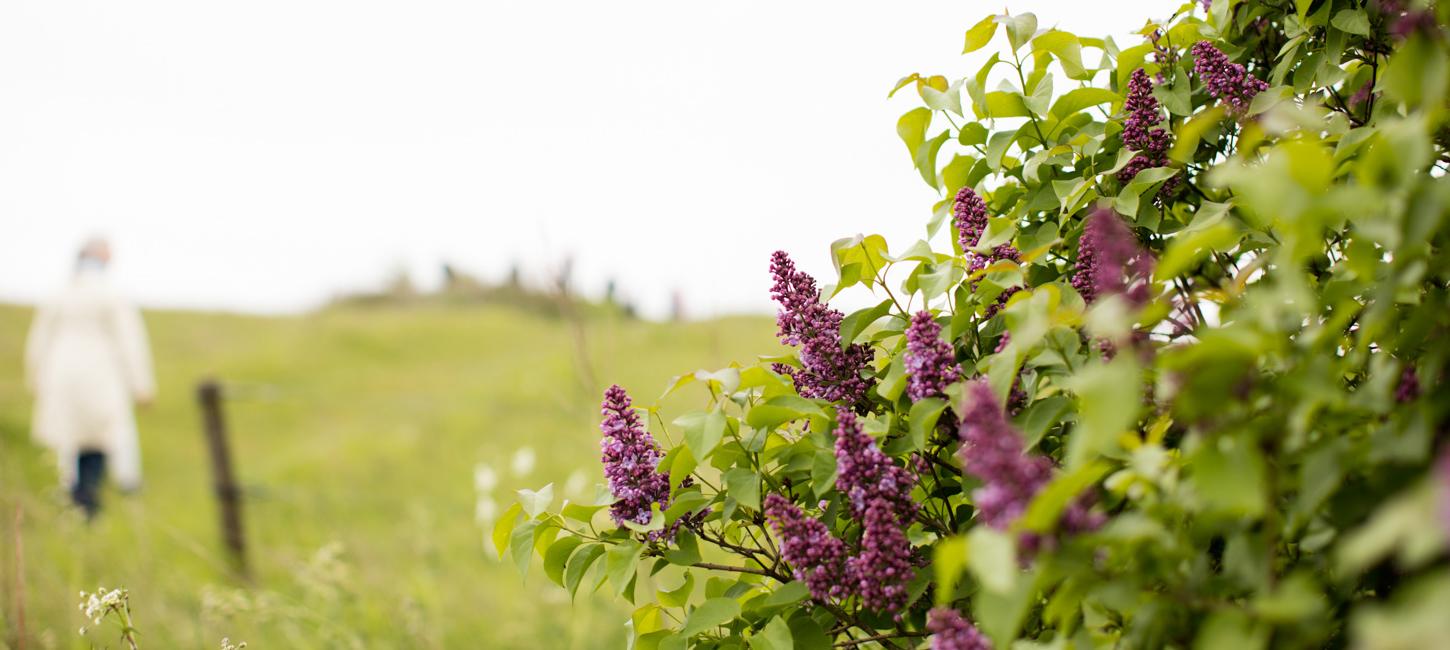
Hike along the lilac hedges of South Fyn
When the lilac blooms in May/early June, the colourful hedges create a spectacular sight in the countryside – and the heady scent of the delightful flowers fills the air. South Fyn – particularly the Faaborg region – is famous far and wide for the incredibly beautiful lilac hedges.
Directions
Start off in the beautiful, neatly preserved town of Faldsled, which dates all the way back to the 1400s. From here, follow the Archipelago Trail as it passes sights such as Steensgaard Manor House, which provides accommodation today. It also has a restaurant and a farm shop, a herb garden and a Jersey cattle farm. After about 9 km, you will reach Trebjerg hill, where there is a 128-metre-high hill just 100 metres or so to the west of the Archipelago Trail. Climb to the top and treat yourself to a truly magnificent view out over the surrounding landscape.
A little farther along the trail you will come to Haastrupvej. Here, you should leave the Archipelago Trail and head south along Haastrupvej and then along Haastrup Bjergvej, where you will see beautiful lilac hedges. When Haastrup Bjergvej comes to an end, turn left towards Stenlund and continue down Trentevej, which is also lined with sweet-smelling lilac.
Retrace your steps until you rejoin the Archipelago Trail once more, then head off to Trente Mill where the route ends. Treat yourself to a cup of coffee or a soft drink to celebrate! Trente Mill is located around 600 metres from the trail and is easy to find. Find out more about Trente Mill.
The lilac hedges are of major cultural and historical significance, and work is underway to map them in more detail. In the future, this particular route will be just one of many possible ‘lilac walks’. As such, there is more than a hint of ‘Sherlock Holmes’ about the route this season – but that does mean that you will be one of the ‘lilac pioneers’.
The history of lilac
The lilac hedges make up one of the most distinctive features of the South Fyn landscape. Their history begins in the early 1800s, when they were introduced to the region and planted as hedges on account of their excellent growing capacity – and later on for their sheer beauty and sweet smell. They soon found their way into the hearts of artists, and famous figures including Hans Christian Andersen and Anne Syberg brought lilac into their works.
At global level, the lilac hedges on South Fyn are unique. Nowhere else in the world will you find lilac hedges used to the same extent as here. Lilac lines a great many roads here, often on both sides. The colourful and sweet-smelling hedges were originally planted to provide shelter and protection from the biting westerly winds. Another function was to mark boundaries between stretches of land, and to keep livestock away from the crops grown in adjoining fields.
Lilac branches were also used for kindling and firewood, soon replacing thorny hawthorn. Housewives and housekeepers throughout the area were delighted with this development as they no longer pricked themselves on the sharp thorns. In addition, lilac burns much better on account of its high content of oil.
As the lilac hedges form part of Denmark’s living cultural heritage – and it is therefore important to protect them and understand their significance – museums and local authorities are working hard to collect as much knowledge as possible about them. In 2013, the first stage of a project to map the lilac hedges in the region was carried out by volunteers under the auspices of the Archipelago Museum (Øhavsmuseet) in Faaborg.